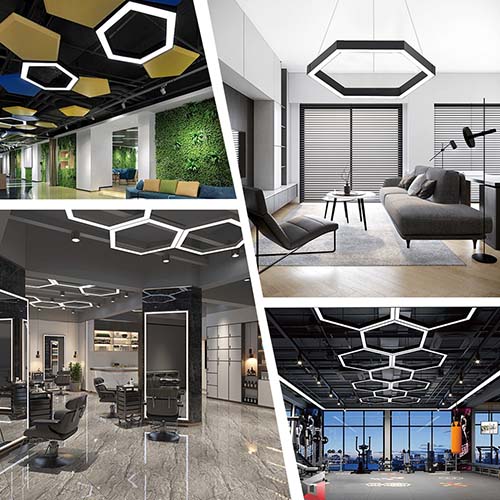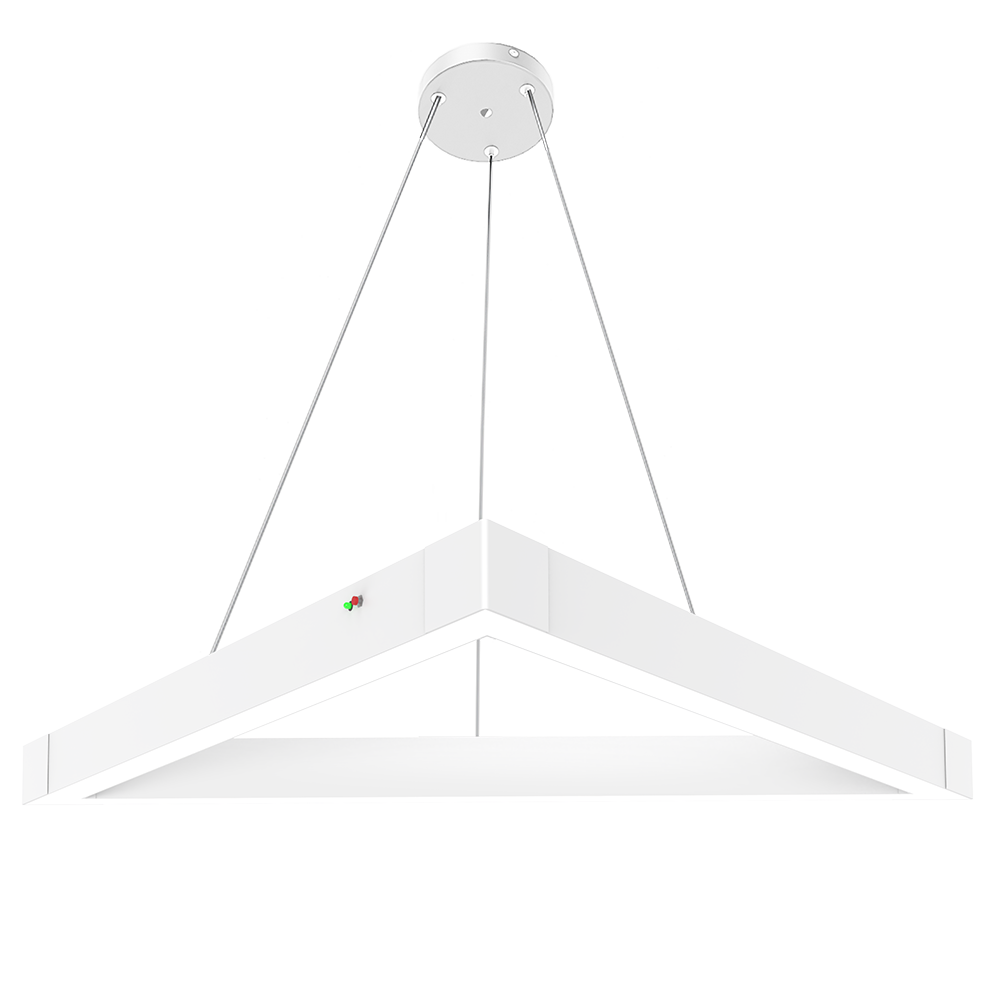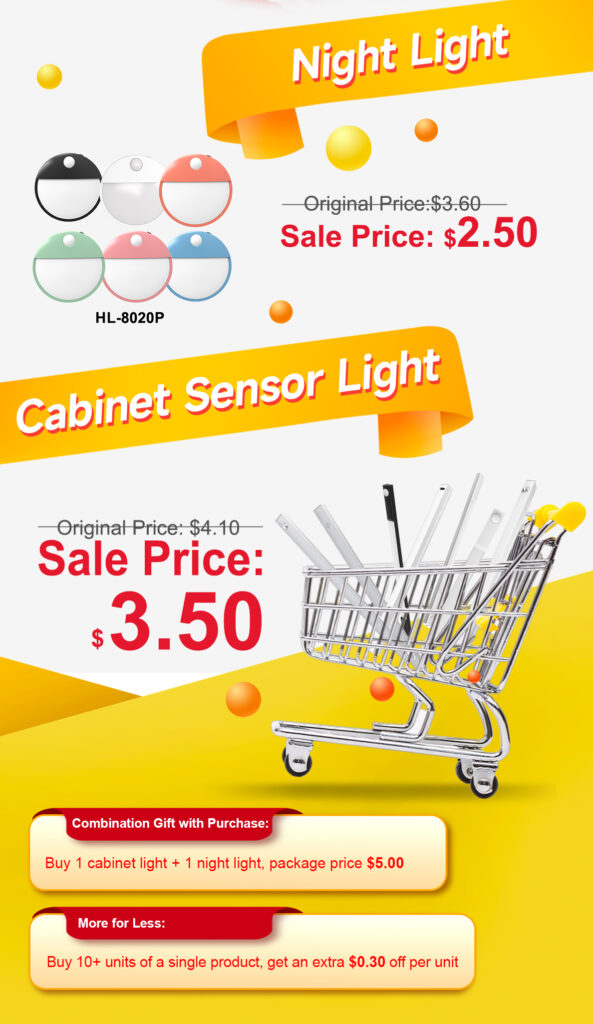In the operation of commercial spaces, lighting was once merely seen as a “tool for environmental illumination”. However, with the iteration of LED technology and the deepening of green development concepts, its value has transcended basic functions and become a core strategic fulcrum for improving efficiency, optimizing experiences, and shaping brands. Driven by both cost pressures and experience demands, redefining the importance of commercial lighting is key to achieving high-return operations.
I. From “Energy Saving” to “Efficiency”: The Reconstruction of Light Value

Over the past decade, the core demand for iluminación comercial has focused on “high luminous efficacy (lm/W)” and energy-saving rates. Yet, the simple pursuit of “brighter and more energy-efficient” can no longer meet the needs of complex commercial scenarios. Today, “scenario-adaptive luminous efficacy” has become the core of value — providing exactly the required light at the right time and place to achieve the dual goals of “experience enhancement” and “extreme energy conservation”.
A typical transformation of an office building in a science and technology park shows: originally, 36W T8 fluorescent lamps were used, with an annual lighting energy consumption of 86,000 kWh, and full replacement was needed every 3 years. After switching to 18W full-spectrum LED panel lights (luminous efficacy 160lm/W, Ra95) paired with a dual-sensor system, “lights on when people are present, lights off when people leave + natural light compensation” was realized. The illuminance in meeting rooms was maintained at ≥500lx, while that in corridors was ≤100lx. As a result, annual energy consumption dropped to 29,000 kWh (energy saving rate of 66%), employee complaints about eye fatigue decreased by 40%, and task completion efficiency increased by 15%.
Anonymous industrial transformation case (summarized from public LED lighting project data).
In retail scenarios, after a 100,000 m² shopping mall adopted a dynamic dimming system, the brightness of public areas was adjusted on demand in the morning and evening. Brand stores could switch light colors, and the system automatically switched to 10% brightness for safety after closing. After the transformation, the proportion of lighting energy consumption dropped from 35% to 18% (saving 1.2 million kWh annually), and the average customer stay time increased by 12%.
Anonymous retail property renovation case (extracted from China Commercial Real Estate Association’s 2024 Lighting Efficiency Report).
This model solves three core problems: reducing fatigue by matching the biological clock with a dynamic light environment to improve employee efficiency; avoiding “over-illumination” through precise light supply, with an energy saving rate of up to 60% or more; and highlighting product advantages through directional light efficacy to enhance attractiveness.
II. From “Product Procurement” to “Service Subscription”: The Subversion of Business Model

A “ownership revolution” is underway in the lighting industry — enterprises no longer need to purchase luminaires in one go, but can subscribe to light environments through “Lighting as a Service (LaaS)”. This model turns “one-time transactions” into long-term service cooperation, which not only lowers the threshold for initial investment but also optimizes full-cycle benefits.
The core of LaaS is “pay-for-performance”. The “pay-per-light” model launched by global lighting enterprise Signify is representative: enterprises sign a 5-year contract with service providers, who are responsible for the installation, operation, maintenance, and update of the lighting system. Customers only pay monthly fees based on “guaranteed illuminance” or “actual electricity savings”, and the ownership of the luminaires remains with the service providers .
Signify Official Website. “LaaS (Lighting as a Service) Business Model Introduction”, 2024.
After Amsterdam Airport Schiphol adopted this model, its lighting energy consumption dropped by 50%, and the response time for luminaire failures was shortened from 48 hours to 4 hours. The National Union of Students (UK) reduced its lighting power load to 5.9W/m² (far below the industry average of 8-12W/m²) through this model, saving over 300,000 GBP in annual electricity costs .
National Union of Students (UK). “Campus Lighting Energy-Saving Project Report”, 2023.
For commercial operators, LaaS can convert the fixed cost of equipment procurement into variable costs, eliminating the need for huge initial investment; operation and maintenance responsibilities are transferred to service providers, reducing the pressure of facility management; after the contract expires, enterprises can flexibly renew or switch plans to adapt to business expansion needs.
III. Beyond Compliance: Lighting as a Brand Value Amplifier
Against the backdrop of the advancement of the “dual carbon” goal and the tightening of environmental regulations, compliance in commercial lighting has evolved from a “bottom line to avoid penalties” to a “brand bonus point”. Adopting advanced green lighting solutions is essentially a way to convey the concept of sustainable development to consumers and partners, and shape a responsible brand image.
The practice of NVC Lighting is instructive: it integrates ESG concepts into the entire industrial chain, builds energy management systems in bases, realizes renewable electricity replacement, uses recycled materials in products (accounting for ≥30%), and its modular design enables a recycling rate of over 85%. These measures helped its brand value exceed 67.9 billion yuan in 2025. Its public welfare projects have renovated more than 200 classrooms in over 30 schools, benefiting more than 40,000 teenagers and deepening consumer favor .
NVC Lighting Official Release. “2025 ESG Report and Brand Value Evaluation”, 2025.
The brand premium brought by compliance is tangible: after a chain coffee brand adopted its full-spectrum LED system, it displayed the data “12 tons of annual carbon reduction” in stores. 78% of consumers said they would prioritize eco-friendly brands, and the repurchase rate increased by 20%. Conversely, in 2024, a supermarket was fined 150,000 yuan for using non-energy-saving luminaires, triggering negative public opinion of “weak environmental awareness”, and its customer flow dropped by 8% that month .
A Guide to High-Return Investment in Commercial Lighting
Decision-makers in enterprises can promote lighting upgrades in the following steps:
- Scenario Diagnosis: Use an illuminance meter to test the existing light environment and identify core pain points — focus on “efficiency and health” for office scenarios, “experience and conversion” for retail scenarios, and “energy saving and safety” for public spaces;
- Model Selection: Prioritize LaaS solutions if the budget is limited; for long-term property ownership, adopt the combination of “smart luminaires + operation and maintenance services” to balance initial investment and full-cycle benefits;
- Compliance Adaptation: Prioritize brands certified by ISO 50001 and using recycled materials, and apply for local energy-saving subsidies simultaneously (the proportion in some regions reaches 30%) ;
- Effect Verification: Establish a KPI monitoring system — track “efficiency improvement rate” for office scenarios, focus on “customer unit price and stay time” for retail scenarios, and monitor “energy consumption reduction rate” for all scenarios.
Helian’s Serie Smart Puzzle products enable intelligent customization and offer greater flexibility in form design:
Conclusión
The value of commercial lighting has long transcended the basic function of “space illumination”. From scenario-adaptive luminous efficacy to improve operational efficiency, to the LaaS model to optimize cost structure, and then to compliance practices to shape brand value, every investment is generating quantifiable returns. For contemporary commercial operators, lighting is no longer a “cost item” but a “strategic investment” that leverages efficiency, experience, and brands — choosing the right lighting means choosing the underlying logic of sustainable growth.



